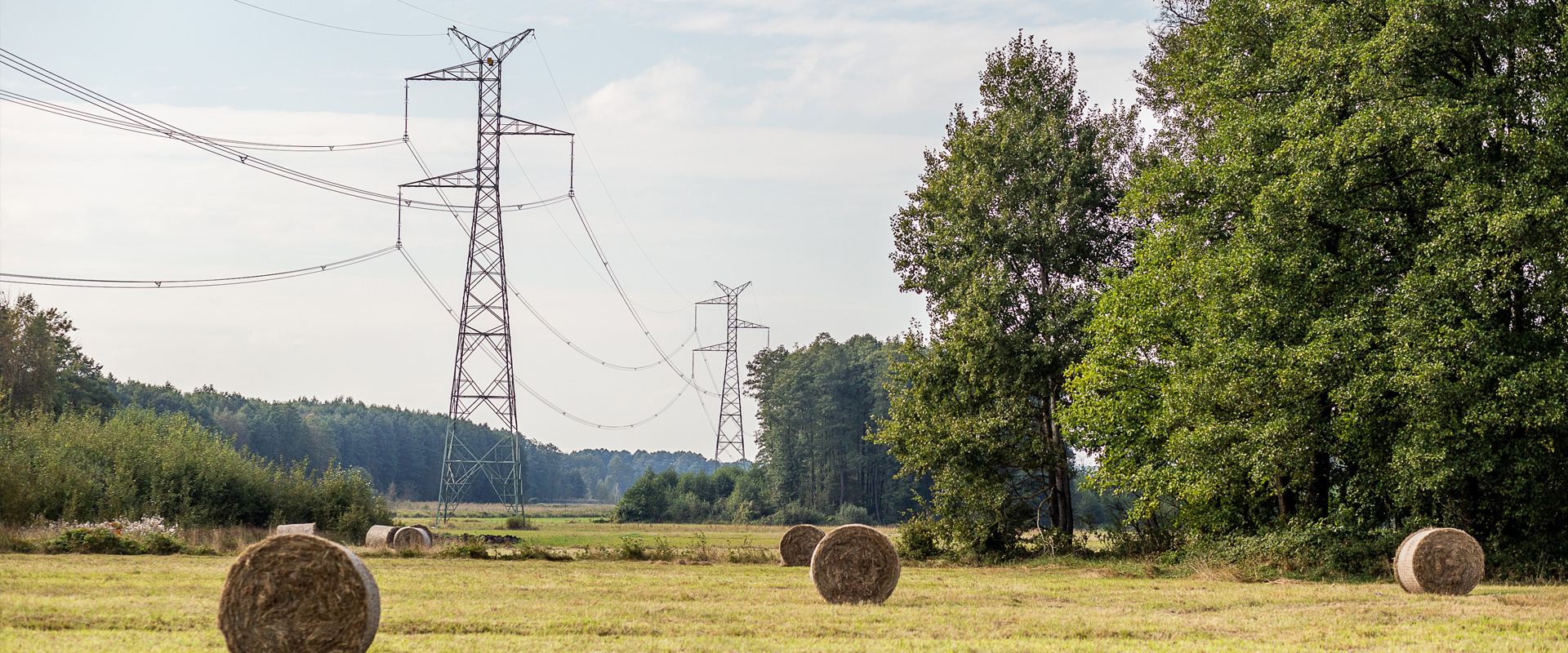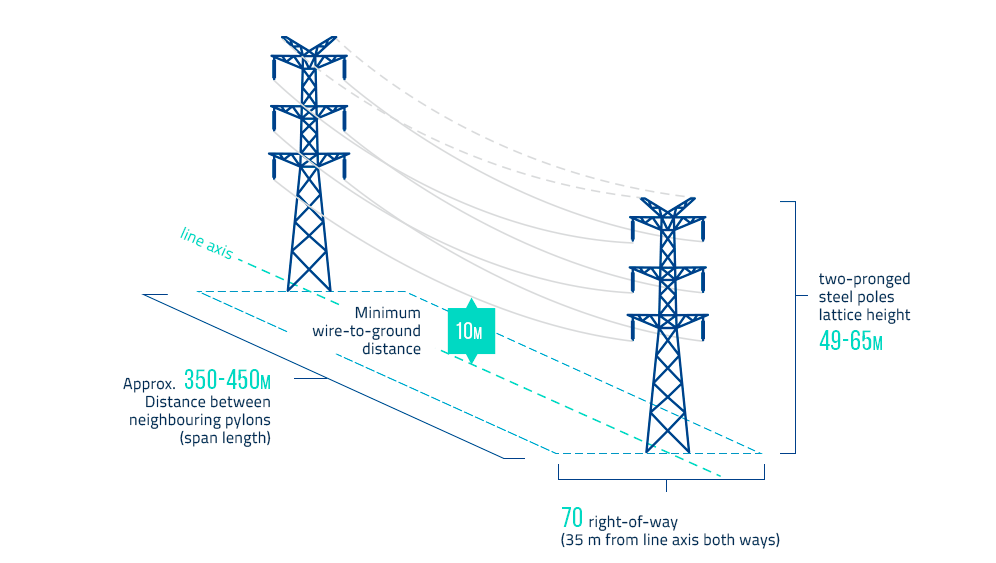Impact on society and employees
Our activities and ensuring the continuity of electricity supply determine the wellbeing of Poles.
It is PSE’s particular concern to ensure the security of employees and contractors’ personnel providing services to our company. To make this possible, we incessantly take care of the development and security of our technical infrastructure.
We are a modern organisation fostering an innovative working environment. We care about the development of internal competences of our employees. We want to constantly strengthen the unique knowledge base in the organisation and the expertise of the PSE staff responsible for maintaining a secure and stable power system.
It is PSE’s particular concern to ensure the security of employees and contractors’ personnel providing services to our company. To make this possible, we incessantly take care of the development and security of our technical infrastructure.
We are a modern organisation fostering an innovative working environment. We care about the development of internal competences of our employees. We want to constantly strengthen the unique knowledge base in the organisation and the expertise of the PSE staff responsible for maintaining a secure and stable power system.
Impact on society and employees
Good practices and standards related to living and functioning in the vicinity of power lines
In using transmission facilities, it is very important to exercise maximum care and to be guided by common sense. Equipment forming power lines is designed so as to minimise the risk of negative impact on person present in the vicinity of the line. Line location is planned so that transmission equipment does not pose a risk to the surrounding human settlements and are integrated as much as possible into the landscape.
In order to eliminate possible threats, our qualified employees carry out cyclic line survey activities and asses their state of repair. In the event of circumstances requiring intervention, they take measures to eliminate situations that potentially threaten property and people in the vicinity of the line. Such actions are intensified especially in situations of increased risk or in critical situations, such as floods or hurricanes. In this aspect, cooperation between the company’s employees and the owners of land neighbouring on power lines is also important. People living in the vicinity of a line are often the best source of information on any phenomena occurring. Their good will and assistance can significantly support the process of preventing potential risk or shorten the process of removing a failure.
In principle, the owners of properties on which transmission equipment is situated or over which there are power lines, have an unconstrained access to their properties which they can use freely subject to observing relevant precautions. Consequently, they can also, without time limitations, conduct business with the use of specific equipment and machinery, or carry on farming activities.

How to live in the vicinity of a line?
To live in the vicinity of a line in an undisturbed manner, one should simply exercise common sense and observe elementary precautions – especially within the right of way.
The right of way is the area directly under the power lines and on both sides of the line, in which work involved in line construction, conversion, upgrade and maintenance is allowed, and within which, for reasons of safety of line operation and the immediate surroundings, freedom of land management is restricted. The right of way can range between 50 m and 80 m, depending on the type of line.
For safety reasons, it is also necessary to refrain from any activities that could pose a risk to the efficient operation of the line and cause a potential hazard to people situated in its proximity. Any interference with the line and activities that could lead to its damage or electric shock, e.g. climbing pylons or performing field work with machines which have high booms or are high themselves.
PSE performs annual line surveys and assessments of their state of repair. In the event circumstances arise that may have an impact on the continuity of electricity supply or pose a risk to property or people in the vicinity of the line, we urgently implement remedial actions. All work – repairs, overhauls, clearing trees of excessive height – is performed by specialist teams of our organisation and at PSE’s expense.
The width of the right of way depends mainly on the line voltage rating and the type (series) of the towers used. The boundaries of the line right of way are set out on the basis of the requirements of regulations on the electric and magnetic field limits, and the noise limit.
The average width of the right of way for different types of extra high voltage lines operated in the country does not exceed: for 400 kV lines – 40 and 35 m from the axis, depending on the line design; and for 220 kV – 25 m from the line axis on both sides.

Fig. 1. Right of way for a 400 kV line (source)
PLearn a few rules concerning conduct in the vicinity of power lines:
- It is not allowed for unauthorised persons to climb towers and touch transmission equipment, in particular power lines.
- It is not allowed to erect new residential buildings or new built structures with rooms intended for human occupation directly under the line or within its right of way (the area directly under the line and on its both sides).
- Owners of properties used as cropland can freely cultivate crops and work with the use of heavy farming equipment (harvesters, tractors, sowing machines, and other mechanical farm machines). Precautions must be taken in doing so, especially in situations where the machines or equipment used have long booms or are high themselves.
- Under overhead lines or in their immediate vicinity, there are no restrictions concerning cattle or other breeding animals grazing, nor any obstacles to setting up fishponds. According to reference studies and data published by the World Health Organisation (WHO), electromagnetic fields in the extra-high voltage line environment are not harmful to breeding animals.
- It is not allowed to plant trees that could grow dangerously close to power lines – owing to the potential risk of power lines being touched by tree branches. PSE maintains ongoing monitoring of the facilities owned by the company. In case of above-standard growth of trees or shrubs in the vicinity of lines, relevant clearing work is carried out. The work is performed at the behest and expense of PSE, and the wood material obtained as a result of clearing is transferred to property owners. Our company conducts tree clearance based on a five-year standard, with the contractor giving a four-year warranty for its work. The distance of wires from tree crowns is thus determined according to the current crown dimensions, taking into account the five-year height growth specific to the particular tree species and habitat. In case of an above-standard growth during the warranty period, additional work is carried out immediately at the contractor’s expense. Clearing work is required only under specific circumstances. In situations where decorative or orchard trees are planted, which do not reach significant heights, such work is not necessary.
Outside the designated right of way, no adverse environmental impact of power lines can possibly occur. In addition, stringent requirements are met, imposed on residential development areas.
